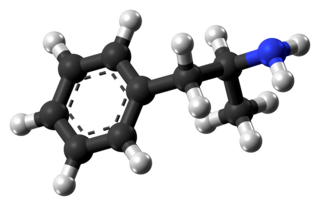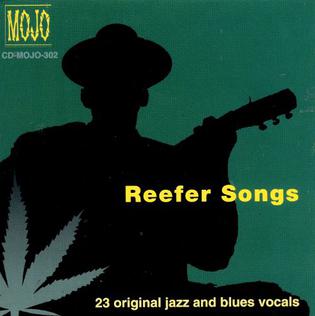
Amphetamine is a central nervous system (CNS) stimulant marketed under the brand name Evekeo, among others. It is used in the treatment of attention deficit hyperactivity disorder (ADHD), narcolepsy, and obesity. Amphetamine was discovered in 1887 and exists as two enantiomers: levoamphetamine and dextroamphetamine. Amphetamine properly refers to a specific chemical, the racemic free base, which is equal parts of the two enantiomers, levoamphetamine and dextroamphetamine, in their pure amine forms. The term is frequently used informally to refer to any combination of the enantiomers, or to either of them alone. Historically, it has been used to treat nasal congestion and depression. Amphetamine is also used as an athletic performance enhancer and cognitive enhancer, and recreationally as an aphrodisiac and euphoriant. It is a prescription drug in many countries, and unauthorized possession and distribution of amphetamine are often tightly controlled due to the significant health risks associated with recreational use.

Stimulants is an overarching term that covers many drugs including those that increase activity of the central nervous system and the body, drugs that are pleasurable and invigorating, or drugs that have sympathomimetic effects. Stimulants are widely used throughout the world as prescription medicines as well as without a prescription as performance-enhancing or recreational drugs. The most frequently prescribed stimulants as of 2013 were lisdexamfetamine, methylphenidate, and amphetamine. It is estimated that the percentage of the world population that has used amphetamine-type stimulants and cocaine combined is between 0.8% and 2.1%.
No is a word in English, which may be used as:

Dextroamphetamine is a central nervous system (CNS) stimulant and an amphetamine enantiomer that is prescribed for the treatment of attention deficit hyperactivity disorder (ADHD) and narcolepsy. It is also used as an athletic performance and cognitive enhancer, and recreationally as an aphrodisiac and euphoriant. Dextroamphetamine was also used in the past by some countries' military forces to fight fatigue during extended combat operations.

Tuinal was the brand name of a discontinued combination drug composed of two barbiturate salts in equal proportions.

Propylhexedrine, sold under the brand names Benzedrex and Obesin among others, is a nasal decongestant, appetite suppressant, and psychostimulant medication. It is used medicinally for relief of congestion due to colds, allergies and allergic rhinitis and recreationally for its euphoric effects. The effects are similar to those of methamphetamine, though the duration of propylhexedrine is much shorter. Propylhexedrine differs from methamphetamine only in that it has a saturated cyclohexane ring where methamphetamine has a phenyl ring.

Sympathomimetic drugs are stimulant compounds which mimic the effects of endogenous agonists of the sympathetic nervous system. The primary endogenous agonists of the sympathetic nervous system are the catecholamines, which function as both neurotransmitters and hormones. Sympathomimetic drugs are used to treat cardiac arrest and low blood pressure, or even delay premature labor, among other things.
Dexamyl was a brand name combination drug composed of sodium amobarbital and dextroamphetamine sulfate (Dexedrine) within the same pill. It was widely abused, and is no longer manufactured.
Alertness is the state of active attention by high sensory awareness such as being watchful and prompt to meet danger or emergency, or being quick to perceive and act. It is related to psychology as well as to physiology. A lack of alertness is a symptom of a number of conditions, including narcolepsy, attention deficit disorder, chronic fatigue syndrome, depression, Addison's disease, or sleep deprivation. Pronounced lack of alertness can be graded as an altered level of consciousness. The word is formed from "alert", which comes from the Italian "all'erta"

para-Methoxyphenylpiperazine is a piperazine derivative with stimulant effects which has been sold as an ingredient in "Party pills", initially in New Zealand and subsequently in other countries around the world.
Eskatrol was an amphetamine weight loss agent which was removed by the U.S. Food and Drug Administration (FDA) in 1981 after its manufacturer, SmithKline & French (SKF), failed to prove the therapeutic effectiveness (Emax) of the medication. At the time it was among the 200 most widely prescribed drugs in the United States. A couple others included Dexamyl and Desbutal pills. Eskatrol contained dextroamphetamine sulfate (Dexedrine) and prochlorperazine (Compazine), a typical antipsychotic.

Levoamphetamine is a central nervous system (CNS) stimulant known to increase wakefulness and concentration in association with decreased appetite and fatigue. Pharmaceuticals that contain levoamphetamine are currently indicated and prescribed for the treatment of attention deficit hyperactivity disorder (ADHD), obesity, and narcolepsy in some countries.
Substituted amphetamines are a class of compounds based upon the amphetamine structure; it includes all derivative compounds which are formed by replacing, or substituting, one or more hydrogen atoms in the amphetamine core structure with substituents. The compounds in this class span a variety of pharmacological subclasses, including stimulants, empathogens, and hallucinogens, among others. Examples of substituted amphetamines are amphetamine (itself), methamphetamine, ephedrine, cathinone, phentermine, mephentermine, bupropion, methoxyphenamine, selegiline, amfepramone, pyrovalerone, MDMA (ecstasy), and DOM (STP).
Methaqualone is a sedative-hypnotic drug similar in effect to barbiturates, a general CNS depressant. Its use peaked in the 1960s and 1970s as a hypnotic for the treatment of insomnia, and as a sedative and muscle relaxant. It has also been used illegally as a recreational drug, commonly known as Quaaludes, particularly in the 1970s in North America, or as Mandrax in the UK. It is no longer manufactured by pharmaceutical companies.
Gordon A. Alles, was an American chemist and pharmacologist who did extensive research on the isolation and properties of insulin for the treatment of diabetics. He is also credited with discovering and publishing the physiological effects of amphetamine and methylenedioxyamphetamine (MDA). He is the first person to have prepared amphetamine sulfate, although not the amphetamine molecule. Alles first reported the physiological properties of amphetamine as a synthetic analog of ephedrine, and therefore received credit for this discovery. He enjoyed large royalties from Smith, Kline & French (SKF) because he sold his patent rights for amphetamine to the company and it enjoyed large sales. Several popular products sold by SKF contained amphetamine, including Benzedrine pills and inhalers, Dexedrine pills and Dexamyl tablets. Counterfeit drugs such as Profetamine appeared, aiming to circumvent Alles' 'weak' patent.

Reefer Songs is a 1989 compilation album of jazz songs about drugs from the 1920s, 1930s, and 1940s. It features notable artists and musicians of the period, including Ella Fitzgerald, Chick Webb, Cab Calloway, Sidney Bechet and Benny Goodman. Although jive / cannabis is the main drug cited here, cocaine, benzedrine (amphetamine) and heroin are also mentioned.
Amphetamine and methamphetamine are central nervous system stimulants used to treat a variety of conditions; when used recreationally, they are colloquially known as "speed." Amphetamine was first synthesized in 1887 in Germany by Romanian chemist Lazăr Edeleanu, who named it phenylisopropylamine. Around the same time, Japanese organic chemist Nagai Nagayoshi isolated ephedrine from the Ephedra sinica plant and later developed a method for ephedrine synthesis. Methamphetamine was synthesized from ephedrine in 1893 by Nagayoshi. Neither drug had a pharmacological use until 1934, when Smith, Kline and French began selling amphetamine as an inhaler under the trade name Benzedrine for congestion.
Stimulant use disorder is a type of substance use disorder that involves the abuse of stimulants. It is defined in the DSM-5 as "the continued use of amphetamine-type substances, cocaine, or other stimulants leading to clinically significant impairment or distress, from mild to severe". These psychoactive drugs, known as stimulants, are the most widely used drugs in the world today. Approximately 200 million Americans have used some type of a stimulant in the past year alone.









